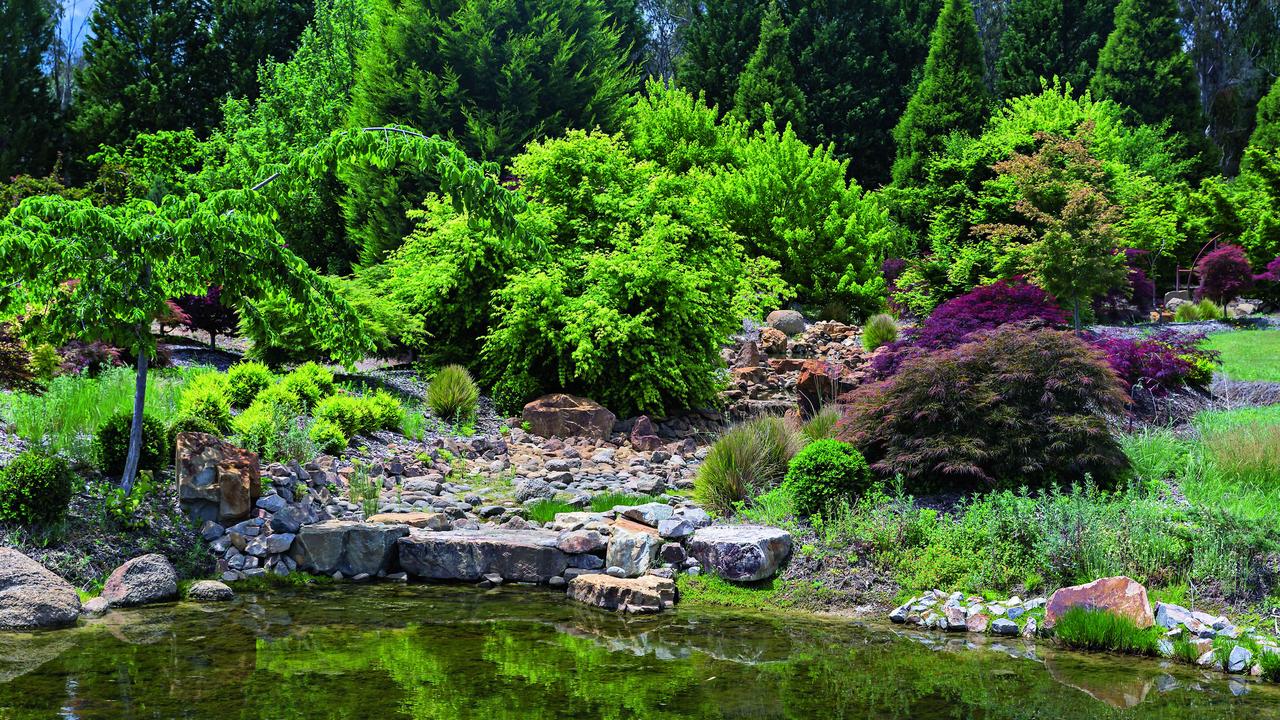Amanda Balmer-designed garden, Adelaide
From rambling cottage garden to this…

A winning garden in this year’s Australian Institute of Landscape Architects Awards for South Australia is a lesson in good design. Created for a couple who wanted a family-friendly garden as part of a major renovation of their Adelaide home, the project was “a journey of the old to the new, embracing change while honouring what has stood the test of time”, says designer Amanda Balmer.
The couple loved the feel of the original, rambling cottage garden on the 1350sqm block they bought in 2015, although it was much neglected. Two stately Canary Island date palms, thought to be at least 150 years old, remain the heroes of the front garden. Beneath them, the new sweeping bluestone path and gravel surrounds are matched tonally with grey and burgundy leafed plants that offer seasonal interest.

It’s a texture-rich palette of old-fashioned and aromatic plants including catmint (Nepeta), euphorbias, clivias and renga lilies (Arthropodium). “We wanted to emulate that charm of the original garden they fell in love with,” says Balmer, director of WAX Design, which won in the gardens category at the awards last month.
In contrast to the historical vernacular of the front of the house, the extension at the rear is clean-lined and contemporary, with a strong connection between indoors and out. “The rear garden is a wonderfully versatile space, which can be altered and utilised for a variety of formal and casual functions,” Balmer says. The generous timber deck, topped by a soaring pavilion roof that maximises natural light, was designed for year-round use with a two-way fireplace and outdoor kitchen.
The house architects, Troppo, suggested an elevated swimming pool to connect the house and deck level and negate the need for pool fencing. But in order to visually integrate it with the garden, Balmer added a long overspill trough planted with papyrus (Cyperus papyrus) and a detailed tiled façade.

“It’s really nice when a client comes to you before all of the built form has been resolved so you can ensure the inside and outside respond to each other and make the most of each opportunity,” says Balmer. “Collaboration with all of the design team was key to the success of the outcome.”
A shapely wattle whose yellow blooms light up the back garden in autumn remains a key feature. Balmer also salvaged a number of fruit trees – guava, fig and citrus – to replant into a small orchard, which along with the vegetable garden and shed are tucked behind two low stone walls at the end of the lawn. Separated from the pool by a row of white crepe myrtles underplanted with silvery licorice plant (Helichrysum petiolare), the lawn is large enough for children’s games. There’s also a tucked-away utility space on the north side, where the pool equipment, clothesline, bins, bike store and trampoline are kept.
“The garden was finished in May 2017 so it hasn’t had long to establish,” says Balmer. “I’m really looking forward to seeing how it evolves in three or four years.”
Q&A
My pencil pine has branches dying on one side. Is this cypress canker? I’m after a natural remedy. Miriam Maloney, Brooklyn, NSW
Cypress canker is a serious disease that affects many conifers, especially old and stressed trees. Your pencil pine is susceptible; Leyland cypress, popular for tall hedges, even more so. Branches die suddenly, resin oozes from bark, and it can kill the tree. The spores spread through wind, water, insects, birds and pruning. No chemicals are registered for this disease but some arborists report success using low-toxicity phosphorous acid. Sold as Yates Anti-Rot, this also treats early stages of phytophthora root rot, which could be the problem. Cypress bark beetle and weevil are possible – check the bark for holes and frass.
My tomatoes are often badly damaged by green caterpillars, despite spraying. How do I control them? Jack Neville, Melbourne
The timing of organic sprays for caterpillars is important. Early and repeated applications are needed. Floating row covers stop moths landing on plants to lay eggs. Pungent herbs among your tomatoes can help confuse pests.
I’ve tried for years to grow NSW Christmas bush but they all wither away after a year or two. I’ve tried sun, shade, poor and rich soil, neglect and cosseting. At 88 I want to succeed before I become compost! Douglas Howie, Grays Point, NSW
Christmas bush grows naturally in moist gullies and slopes. It must have well-drained, slightly acidic soil. Avoid saline soil. Plant a named variety on a mound in a sheltered, sunny spot. Keep well watered, especially during warm weather, and use a native fertiliser.

Send your questions to: helenyoungtwig@gmail.com or Helen Young, PO Box 3098, Willoughby North, NSW 2068. Website: helenyoung.com.au. The best question for August wins a pair of waterproof, lined Muck Boots worth $129.95. swanndri.com.au




To join the conversation, please log in. Don't have an account? Register
Join the conversation, you are commenting as Logout